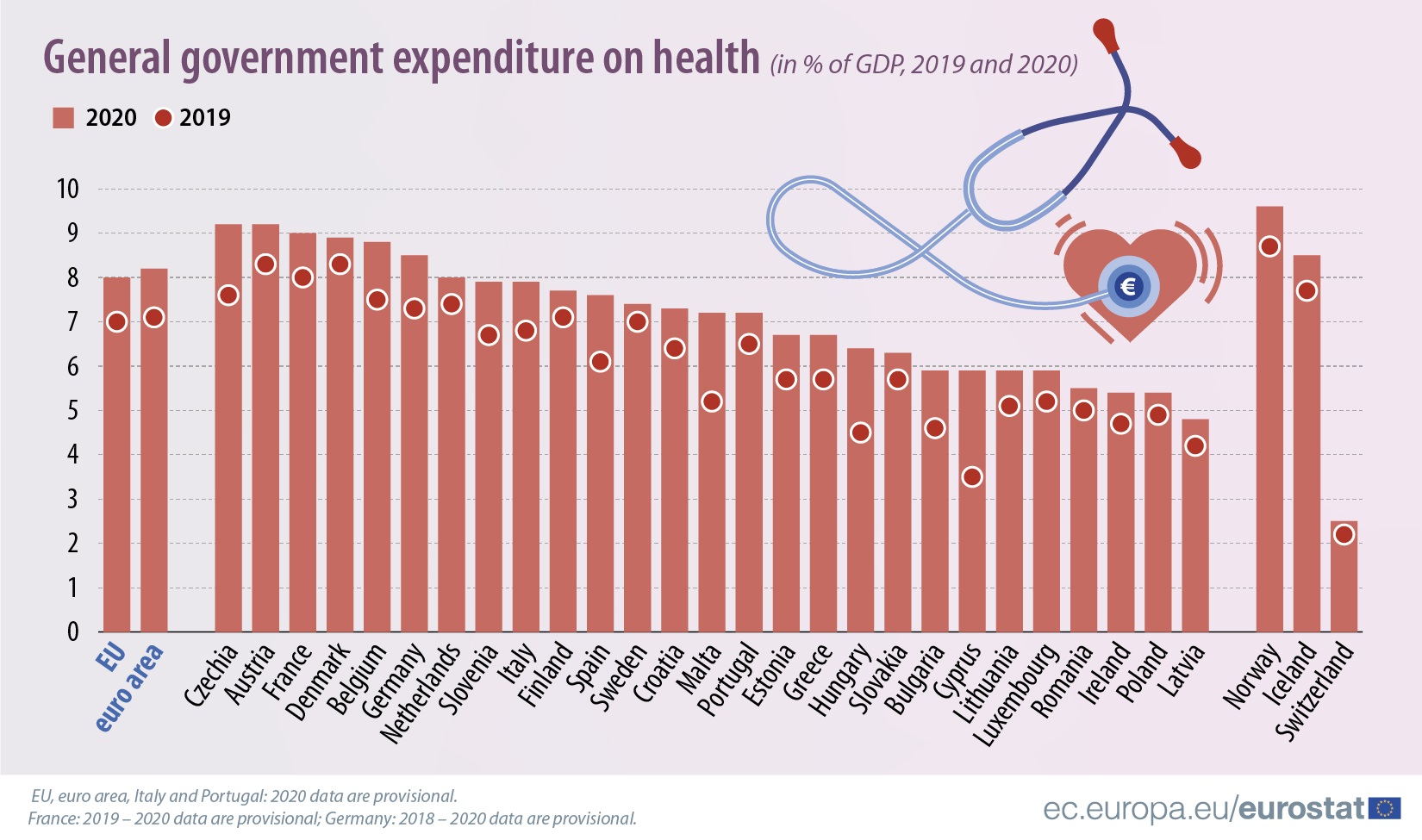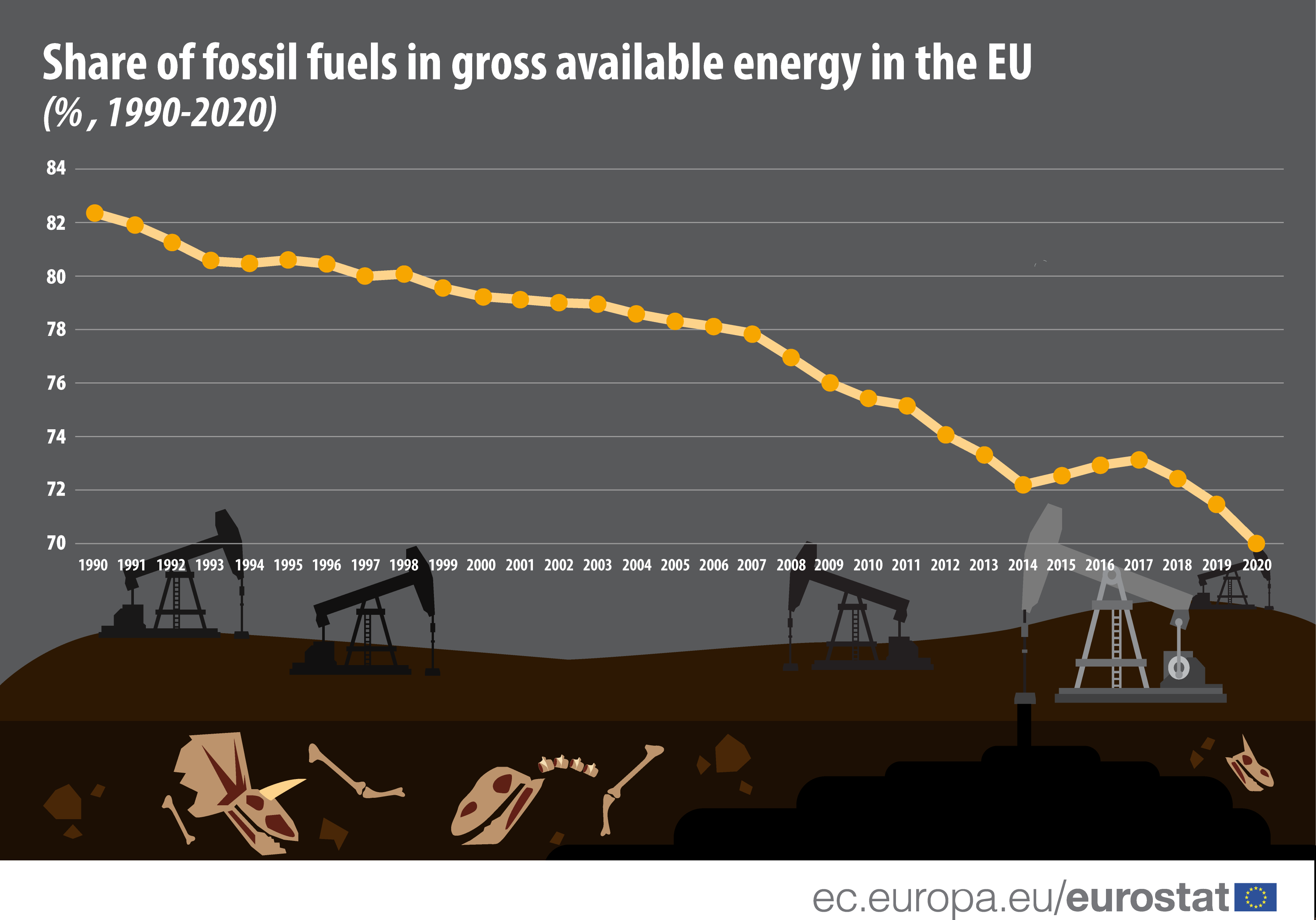Rents and house prices in the EU have continued their steady increase in the fourth quarter of 2021, going up by 1.3% and 10.0% respectively, compared with the fourth quarter of 2020.
Statistics
In 2020, the EU imported 58% of the energy it consumed, as its own production satisfied only 42% of its needs.
The market shares of the largest electricity and gas producers in the EU have been decreasing in most countries.
Government expenditure on health increased by 1 percentage point (pp) compared with 2019 (8.0% of GDP in 2020 compared with 7.0% of GDP in 2019).
Data on the EU’s labour market in the third quarter of 2021 indicate that men were more likely to be self-employed than women: 16.4% of employed men were self-employed compared with 9.5% of women.
The area used for organic agricultural production in the EU continues to increase. It covered 14.7 million hectares in 2020, up from 9.5 million hectares in 2012, equivalent to a rise of 56%.
In the EU, we still largely rely on fossil fuels for our overall energy supply, illustrated by the ratio of fossil fuels in gross available energy (the total energy demand of a country or region).
In 2021, 80% of people in the EU aged 16 to 74 who used the internet in the last three months prior to the survey knew that cookies can be used to trace people's online activities.
The European Union (EU) has met the 10% target level for 2020 for the share of renewable energy (including liquid biofuels, biomethane and ‘green’ electricity) used in transport.
In 2020, renewable energy sources made up 37% of gross electricity consumption in the EU, up from 34% in 2019.









